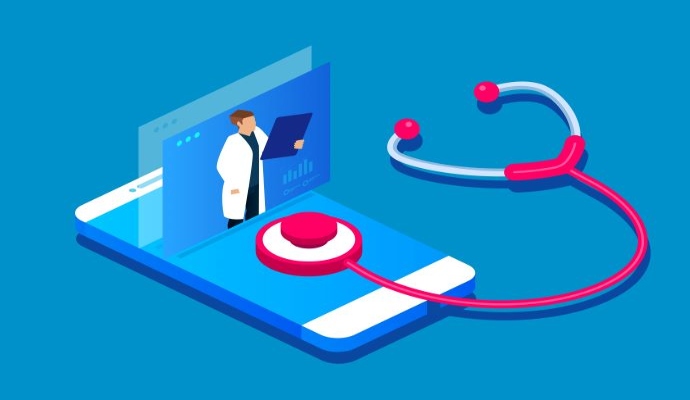Telehealth Effective in Treating OUD Patients with Hepatitis C Virus
New research shows opioid use disorder patients with hepatitis C virus treated via telehealth were twice as likely to be cured than those receiving in-person care.

Source: Getty Images
- Telehealth provides an effective strategy for treating opioid use disorder (OUD) patients with hepatitis C virus (HCV), according to a new study.
Conducted by researchers at the University at Buffalo (UB) in New York, the study examined whether integrating telehealth into opioid treatment programs for HCV management could eliminate the need for offsite referrals. The study was supported by a Patient-Centered Outcomes Research Institute (PCORI) Award and partially by the Troup Fund of the Kaleida Health Foundation.
OUD patients are at high risk for developing HCV as injection drug use and needle stick injuries are common risk factors for virus transmission. The virus is spread through contact with an infected person’s blood and can result in health problems like cirrhosis and liver cancer.
Research published in 2018 shows that the annual incidence rate of acute HCV infection increased more than two-fold from 2004 to 2014, alongside a four-fold increase in injections of heroin and prescription opioid analgesics. Researchers concluded that “the national increase in acute HCV infection is related to the country's opioid epidemic and associated increases in IDU [injection drug use].”
To manage HCV infections, OUD patients are often sent offsite to an HCV specialist. The UB researchers compared this usual care strategy with onsite telehealth visits with an HCV specialist.
For the study, UB researchers enrolled 602 OUD patients with HCV from 12 opioid treatment programs that dispensed methadone in New York State from 2017 to 2022. The study participants received treatment with direct-acting antiviral medications for HCV. Researchers conducted follow-ups for two years to identify reinfections.
The study shows that 90.7 percent of the patients who met with an HCV specialist onsite via telehealth were cured of the infection compared to 35.2 percent of those who met in-person with a specialist offsite.
Further, two-thirds of those in the in-person group did not initiate HCV treatment.
According to Andrew H. Talal, MD, the study’s principal investigator and a professor of medicine in the Jacobs School of Medicine and Biomedical Sciences at UB, these findings indicate that telehealth can help mitigate the stigma OUD patients face in conventional healthcare settings.
“Our study demonstrates how telemedicine successfully integrates medical and behavioral treatment,” he said in the press release. “Our participants viewed the opioid treatment program as a destigmatizing environment to begin with. When participants trust the staff in the program, that trust then extends to the telemedicine provider, especially when they express empathy. These attributes allow for successful HCV treatment and lead to high patient satisfaction through telemedicine.”
Additionally, in the two years of follow-up, there were minimal HCV reinfections and improvements in health among both groups.
“We observed significant decreases in substance use among all of those who were cured, regardless of which arm of the study they were in,” said Talal. “Patient interviews revealed that being cured of HCV strengthened their self-confidence and enabled them to address other health issues and challenges in their lives.”
The researchers presented their findings on November 13 at the annual meeting of the American Association for the Study of Liver Diseases in Boston.
The study aligns with other research showing that telehealth can support OUD treatment.
A study published last month showed that Medicaid beneficiaries who begin OUD treatment via telehealth were more likely to stay in treatment than those who did not use telehealth. Researchers analyzed Medicaid claims and enrollment data from November 1, 2019, to December 31, 2020, for adults aged 18 to 64 in Kentucky and Ohio.
They found that initiating buprenorphine treatment through telehealth was associated with better odds of 90-day retention in treatment in both states compared with not starting treatment through telehealth. Among the individuals who initiated buprenorphine via telehealth in the second or third quarter of 2020, the proportion that continued treatment for at least 90 days was 45 percent in Kentucky and 28.5 percent in Ohio.
Additionally, starting buprenorphine treatment via telehealth was not associated with an increased likelihood of opioid-related non-fatal overdose.
